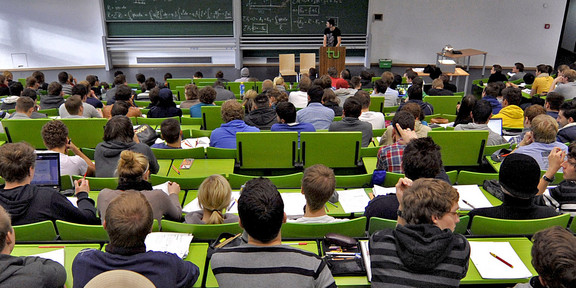Persistent spin helix – a manifestation of spin-orbit interaction in low-dimensional semiconductors
- Kolloquium

Persistent spin helix – a manifestation of spin-orbit interaction in low-dimensional semiconductors
Quantum phenomena such as the spin-orbit interaction (SOI) lead to interesting phenomena in the spatial and temporal evolution of spins in semiconductors. In general, SOI results in an effective magnetic field seen by the propagating electrons, causing a precession of their spins. In low-dimensional structures, as quantum wells (QWs), this effective magnetic field originates from a combination of bulk inversion asymmetry (BIA – Dresselhaus SOI) and structural inversion asymmetry (SIA – Rashba SOI), encompassing contributions that are linear and cubic in the momentum k. The SIA and BIA terms interfere, resulting in a strong anisotropy of the effective magnetic field when the k terms are of similar strength. Under these circumstances, the dominant spin-dephasing mechanism (Dyakonov–Perel relaxation) is suppressed, giving rise to a long living spin mode named persistent spin helix (PSH) [1-3]. Other example of low-dimensional systems are the monolayers of the transition-metal dichalcogenides (TMDs), such as MoSe2, WSe2, etc. In these systems, the strong spin-orbit interaction and lack of the inversion symmetry lift the spin degeneracy of the electron and hole states and lock the spin and valley (pseudospin) degrees of freedom [4]. During this lecture, I will show how the PSH and SOI parameters, in the above mentioned low-dimensional systems, can be successfully measured and fine-tuned by application of external magnetic and/or electric fields. For these purposes, the optical orientation is employed to excite the spin ensemble whereas its spatio-temporal evolution is monitored using the time-resolved magneto-optic Kerr microscopy.
[1] S. Anghel et al., Physical Review B 103 (2021).
[2] S. Anghel, F. Passmann, K. J. Schiller, J. N. Moore, G. Yusa, T. Mano, T. Noda, M. Betz, and A. D. Bristow, Physical Review B 101 (2020).
[3] F. Passmann, A. D. Bristow, J. N. Moore, G. Yusa, T. Mano, T. Noda, M. Betz, and S. Anghel, Physical Review B 99, 125404 (2019).
[4] S. Anghel, F. Passmann, C. Ruppert, A. Bristow, and M. Betz, 2D Materials 5, 045024 (2018).









